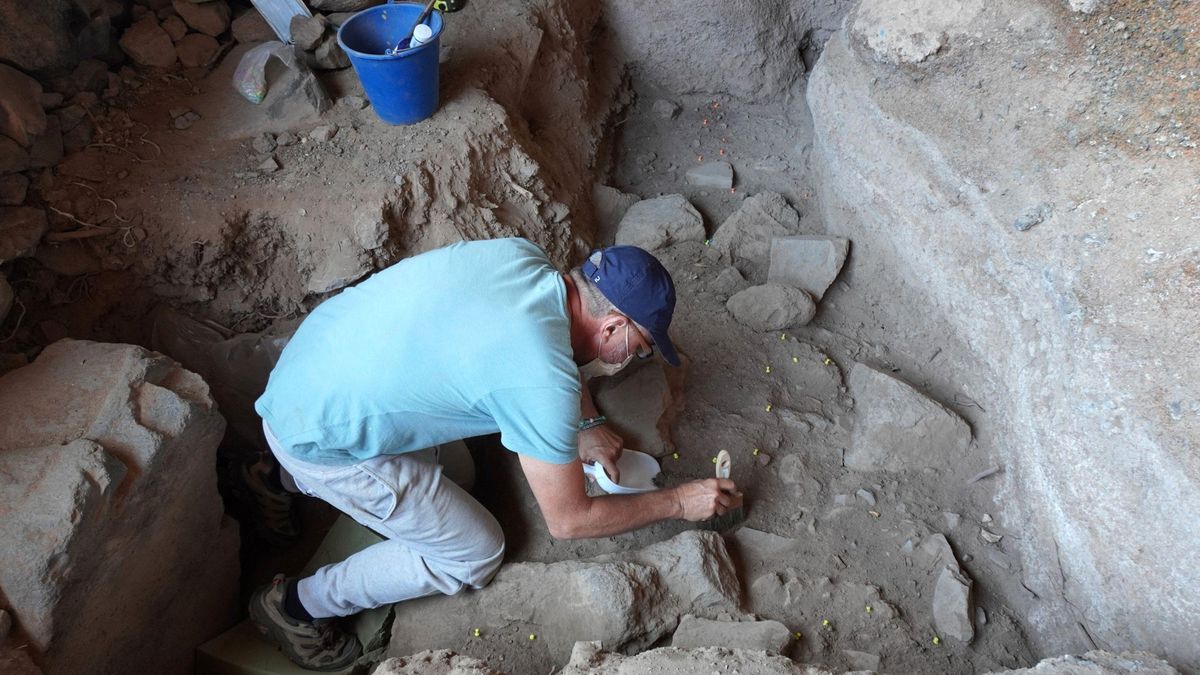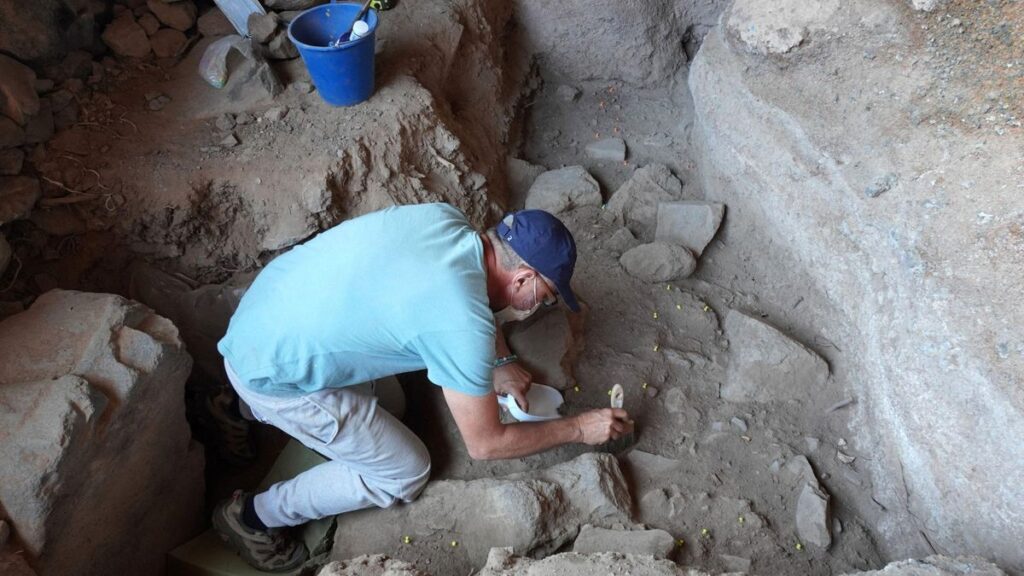A Unique Glimpse into Gomera’s Distant Past
Excavations at the Lomito del Medio cave in San Sebastián de La Gomera have uncovered a fascinating and unprecedented chapter of the island’s aboriginal history. Stratigraphic analysis suggests this natural cavity served a dual purpose: as an animal pen and a domestic living space. This “unique finding” within the Canary Islands context reveals a previously unknown aspect of indigenous life, where people and livestock coexisted within the same shelter.
Unearthing the Evidence of Shared Living
As archaeologist Juan Carlos García explains, the evidence is clear in the alternating layers of the cave floor. There are strata rich in goat and sheep excrement, characteristic of animal enclosures, which alternate with layers containing the remnants of daily human activity. The latter are filled with pottery fragments, stone tools, ash, and other domestic artifacts. This compelling physical proof confirms the shared use of the space by humans and their animals.
An Archaeological Site of Immense Potential
Funded by the Regional Ministry of Universities, Science, Innovation and Culture’s General Directorate of Culture and Cultural Heritage, in collaboration with the island council (Cabildo Insular), this project solidifies the site’s status as one of the most promising enclaves for understanding La Gomera’s remote past. The latest excavation campaign expanded the investigated area to cover half of the cave’s surface.
This extensive dig aims to clarify the cave’s multifunctional use through what archaeologist Sandra Cancel describes as the “analysis of an archaeological record comprising over seven hundred varied artifacts.” The recovered materials are particularly telling, including animal bones and mollusk shells linked to consumption, charred and desiccated plant remains, and everyday technological and artisan items such as pottery shards, used stone flakes, bone awls, and shell beads.
Dating the First Settlers
The significance of Lomito del Medio is magnified by its status as the location with the most complete stratigraphic sequence on the island. It also boasts the oldest recorded dates for human settlement on La Gomera, tracing back to the 1st century AD based on probes conducted in 2009. Anthropologist José Miguel Trujillo states that new Carbon-14 studies planned for this campaign will “refine or complete the chronology of this enclave, which may have been one of the island’s first aboriginal settlements.”
Expanding the Research to the Surrounding Landscape
The second phase of the campaign, set to resume in mid-September, will extend beyond the cave walls. Researchers will conduct a territorial analysis to study the historical use of the surrounding area, developing an inventory of archaeological and ethnographic assets in the Las Puertitas ravine. This heritage survey, involving both archaeologists and anthropologists, will delve deeper into the relationship between the cave site, the ravine, and the network of pastoral paths that encircle it.
A Collaborative Scientific Effort
Given its specialized nature, this archaeological intervention brings together various specialists from across the archipelago. The project, managed by the firm Arqueometra, is co-directed by Juan Francisco Navarro, Juan Carlos García, Juan Carlos Hernández, José Miguel Trujillo, and Sandra Cancel.
The research also benefits from collaboration with the IsoCAN project (Isolation and Colonisation in Oceanic Islands: The Human Colonisation of the Canary Islands), funded by the European Research Council. A team led by archaeologist Jonathan Santana will carry out a systematic analysis of all recovered materials at the University of Las Palmas de Gran Canaria’s (ULPGC) Archaeology Laboratory.
La Gomera’s Role in Unraveling Canarian History
Through this project, the regional government highlights how La Gomera “reaffirms its role as a benchmark for understanding the evolution of the historical settlement of the Canaries.” Investigations at sites like Lomito del Medio, which focus on the first generations arriving from the African continent, and others like the Cuevas de Herrera González, which analyze initial contacts between aboriginal people and Europeans, are cited as “examples of the Canary Islands Government’s commitment to recovering the archipelago’s history with scientific rigor.”


